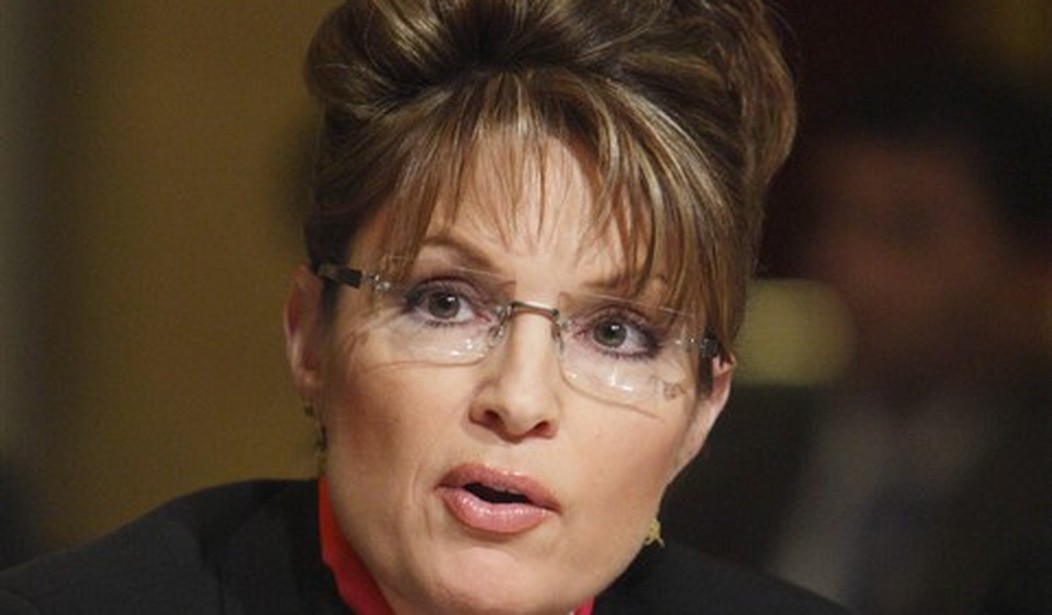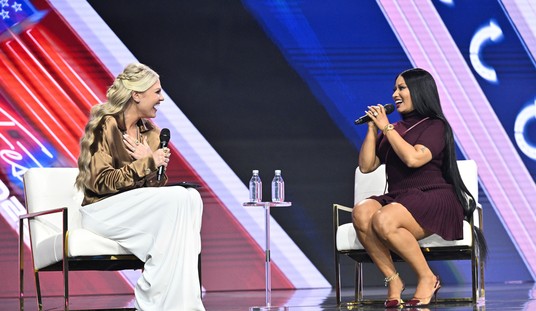You probably heard that Sarah Palin’s libel trial against the NY Times was delayed because she tested positive for COVID. Palin said she never had any symptoms and today the trial is finally back on track. Reuters reports Palin’s attorney began his opening statement by saying her fight against the Times was an uphill battle:
In his opening statement, Palin’s lawyer, Shane Vogt, told jurors his client was fighting an “uphill battle” as she tries to show the editorial reflected the Times’ disregard of the facts and “history of bias” toward her and other Republicans.
The Times’ lawyer, David Axelrod, countered in his opening statement that the editorial sought to hold both Democrats and Republicans responsible for inflammatory rhetoric, and said the newspaper acted “as quickly as possible” to correct its mistake…
“What am I trying to accomplish? Justice, for people who expect the truth in the media,” Palin told reporters as she entered the Manhattan federal courthouse.
I’ve written about this case several times and Palin clearly has an uphill battle here because she is a public figure, meaning she has to prove actual malice on the part of the Times. Proving that James Bennet, the author of the false claims, had actual malice isn’t easy but it should be possible to prove that he acted with reckless disregard for the truth. The detailed record of how the editorial came to be published shows that Bennet wasn’t sure what the truth was with regard to Palin’s connection to the 2011 Tucson shooting. He asked another author to look into it before writing a draft and then, under time pressure, he revised that draft himself, adding a line about a clear connection to Palin even though he (allegedly) never knew if that was true.
I’m not an attorney but isn’t writing that someone is connected to incitement to murder after you’ve admitted you don’t know if that’s true the definition of reckless disregard for the truth? Put another way, if this isn’t reckless disregard what would be?
But it’s still possible the situation is even worse than that. Because if you read the transcript of James Bennet’s 2017 testimony in the case, his explanation of what he meant by the offending paragraph is pretty clearly nonsense. So much so that the district judge himself tried to pin Bennet down. Just read it yourself and see if this sounds like an honest account by Bennet or an attempt to obfuscate:
Q. OK. Do you see where it states, “Was this attack evidence of how vicious American politics has become? Probably. In 2011, when Jared Lee Loughner opened fire in a supermarket parking lot, grievously wounding Representative Gabby Giffords and killing six people, including a 9-year-old girl, the link to political incitement was clear. Before the shooting, Sarah Palin’s political action committee circulated a map of targeted electoral districts that put Ms. Giffords and 19 other Democrats under stylized crosshairs.” Do you see that?
A. I do.
Q. OK. Now, focusing specifically on the language, “the link to political incitement was clear,” do you see that passage?
A. I do, yeah.
Q. And are you the author of that passage?
A. I am.
Q. Could you explain what you meant by the term “political incitement” when you wrote this?
A. Yeah. There are a couple of things at work there. One, I had been very much affected by and was thinking about that day a column that a colleague of mine, Tom Friedman, had written
during the course of the presidential campaign — the last presidential campaign. Then candidate Donald Trump had at a rally and in a speech — I won’t get the words exactly correct — had said something to the effect that, well, maybe the Second Amendment people can do something about Hillary Clinton. And Tom had made a connection that day that I did not make. He had said that — he wrote a piece saying basically to hold on. I have seen this movie before. This is the kind of language that was heard at the runup to the assassination of Rabin. We need to take this kind of stuff very seriously.And then that morning in June this terrible thing had happened. Right? We had actually seen the Congressman come under fire on this field in Virginia. And I was looking for a very strong word to write about the political climate because I wanted to get our readers’ attention. This is a word that we do use sometimes; we don’t use it every day. We use lots of strong expressions like “inflammatory rhetoric,” things like that. Those aren’t actually quite as powerful expression as it has been largely drained of its power because it is used so often, “incendiary rhetoric,” so on and so forth.
Also, I was thinking about — the way I view that particular word from is in my experience in one of my roles at the time that I was a correspondent in Jerusalem at one point for The Times, and the word “incitement” is used there by the Israelis — in my time by the Israelis about the Palestinians but also, to some degree, by the Palestinians about the Israelis to talk about a range of communications from, you know, to deliberate orders, invocations, summonses for people to carry out violent attacks to textbooks that are published that align important facts from the other side’s national narrative or history, to tell outright lies about that history, to maps that misrepresent the politics of the region. And that’s specifically where I was drawing that word from.
THE COURT: Well, maybe I am misunderstanding the question. What you’re linking to political incitement is the shooting by Mr. Loughner in 2011 of Ms. Giffords and others, yes?
THE WITNESS: Your Honor, what I was thinking of with the word the link to political incitement was clear. What I was thinking of was the link between an example of political incitement and this larger atmosphere. What I mean is I was very mindful as I was editing this editorial, I was thinking here we are, we’re deploring political incitement on the left. We’re not actually calling out any concrete example of such incitement, not citing a single politician or political organization. And we were looking for — I had asked Elizabeth, I had said — the shooter in Virginia was a Bernie Sanders supporter. One of the questions I’d asked was is there an example of really incendiary rhetoric from Bernie Sanders? Is there a connection between — we didn’t see that word and we
didn’t see a connection between the victims in Virginia and any specific political incitement. That was the link I was thinking of.THE COURT: Well, maybe I am asking a more narrow question. I am asking a question about grammar and sentence structure, which presumably you have some expertise in. The sentence in its entirety reads: “In 2011, when Jared Lee Loughner opened fire in a supermarket parking lot, grievously wounding Representative Gabby Giffords and killing six people, including a 9-year-old girl, the link to political incitement was clear.” Doesn’t that mean as a matter of ordinary English grammar and usage that that sentence is saying that the shooting in 2011 was clearly linked to political incitement?
THE WITNESS: That is not what I intended it to mean. I understand what you’re saying, your Honor. But what I was thinking of was of the link between the victim and the overall climate, that there was actually an example of political incitement that we could point to in that case to create a link between the victim and the incitement. I wasn’t — what I wasn’t trying to say was that there was a causal link between — a direct causal link between this map and the shooting.
THE COURT: In the next sentence you seem to be saying that the political incitement was the result, in part, of Sarah Palin’s political action committee’s map, yes?
THE WITNESS: In which sentence, your Honor?
THE COURT: The very next sentence, “Before the shooting, Sarah Palin’s political action committee circulated a map of targeted electoral districts that put Ms. Giffords and 19 other Democrats under stylized crosshairs.”
THE WITNESS: Right, your Honor. That is the — is again — in my mind was the example — the specific example of — and the word I used was “political incitement” or “incendiary rhetoric” that connected the climate to the victim.
THE COURT: OK.
THE WITNESS: That is the link.
THE COURT: So if that’s the specific example of political incitement that you are referring to, the whole point of this is to link it to various crimes such as the shooting of Ms. Giffords, yes?
THE WITNESS: What I was concerned about is the overall climate of political incitement and whether that gives permission, to some degree, for violence against elected officials. I wasn’t trying to say that any particular piece of political incitement causes a maniac like Jared Lee Loughner to take up arms and shoot at elected representatives. I don’t — I just — there isn’t a part of it — to my mind, it is a distinction with a very big difference there between — I simply don’t think — I think that politicians who say things that are incendiary should be criticized for saying things that
are incendiary hopefully before something terrible happens, certainly after something terrible happens. But I don’t think — I think that it’s well sort of saying that in saying something terrible, they’re causing a violent action to take place.
So asked what he meant by “political incitement” Bennet filibustered about Donald Trump, Hillary Clinton, Tom Friedman, Yitzhak Rabin, Jews and Palestinians, etc. Not a word in there about Sarah Palin. The judge pushes him to finally concede that, as a matter of “ordinary English grammar” he was connecting the 2011 Tucson shooting to Sarah Palin specifically. And finally, after all of this word salad, he admits that was the incendiary rhetoric he had in mind. Not all of that other stuff he brought up, none of which was mentioned in the editorial. And when he finally does get to that point he winds up stammering incoherently: “I don’t — I just — there isn’t a part of it — to my mind, it is a distinction with a very big difference there between — I simply don’t think…”
Again, does this sound like someone trying to answer truthfully and honestly or does it sound like someone trying to obfuscate and tap dance around the obvious? I hope Palin’s attorney reads this back to the jury and let’s them think about it.
Here’s video of Palin arriving at court.








Join the conversation as a VIP Member